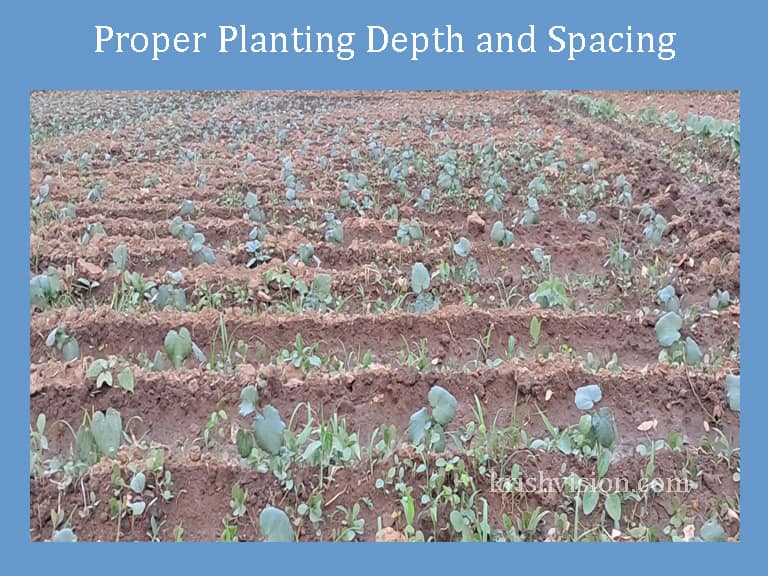Plant Planting: The Art of Successful Gardening
“Be an eco-warrior, plant for a brighter future”
Welcome to our article on the fascinating world of “plant planting”! Whether you’re a seasoned gardener or a curious beginner, this guide is here to ignite your passion and provide you with valuable insights into the art of nurturing and cultivating plants. Plants have an incredible ability to transform our surroundings, improve our well-being, and connect us with the natural world. In this article “Plant Planting”, we will explore the benefits of plant planting, share practical tips and techniques, and guide you on a journey towards creating a thriving and beautiful garden.
The Importance of Plant Planting
Plant planting holds immense significance in our world, as it not only enhances the aesthetic appeal of our surroundings but also plays a vital role in sustaining life on Earth. Through the act of planting, we become active participants in nurturing the environment and promoting a healthier planet for future generations.
One of the primary reasons for the importance of plant planting is its ability to create breathtaking natural beauty. Lush green landscapes, vibrant flower beds, and towering trees not only captivate our senses but also provide a sense of tranquility and solace. These natural spaces serve as sanctuaries for relaxation, contemplation, and rejuvenation, allowing us to reconnect with nature’s splendor.
Beyond their visual allure, plants serve as the foundation for sustaining life on our planet. They play a crucial role in oxygen production, absorbing carbon dioxide, and mitigating the impact of climate change. Through the process of photosynthesis, plants convert sunlight into energy, providing a crucial oxygen supply that supports the survival of countless species, including humans.
Moreover, plant planting contributes to the preservation and restoration of ecosystems. By carefully selecting and planting native species, we can help maintain biodiversity, prevent soil erosion, and provide habitats for wildlife. Plants also contribute to water conservation by stabilizing soil, reducing runoff, and replenishing groundwater reserves.
Additionally, planting trees and vegetation in urban areas helps combat the heat island effect, mitigate air pollution, and improve overall air quality. By creating green spaces within cities, we can enhance the quality of life for urban dwellers, promoting physical and mental well-being.
Recognizing the importance of plant planting is essential for fostering a sustainable future. By actively engaging in the act of planting, we contribute to the preservation of natural beauty, the well-being of our environment, and the sustainability of life itself. Let us embrace the power of plant planting and embark on a journey of nurturing and protecting our precious planet.
Benefits of Gardening and Planting
“Planting today for a blossoming tomorrow”
Engaging in gardening and planting offers a multitude of benefits that extend beyond the beauty of blossoming flowers and bountiful harvests. It provides an opportunity to reconnect with nature, promote physical well-being, enhance mental health, and contribute to a greener and more sustainable environment.
Firstly, gardening and planting are excellent forms of physical activity. Tasks such as digging, planting, weeding, and watering involve various muscle groups, improving strength, flexibility, and endurance. Gardening can be a low-impact exercise suitable for individuals of all ages and abilities. It promotes cardiovascular health, helps maintain a healthy weight, and contributes to overall fitness levels.
Furthermore, the act of gardening has been shown to have positive effects on mental well-being. Spending time amidst nature, tending to plants, and witnessing their growth can reduce stress, anxiety, and depression. The soothing ambiance of gardens and the therapeutic benefits of connecting with nature creates a sense of calm and relaxation. Gardening can also boost self-esteem and provide a sense of accomplishment as individuals witness the fruits of their labor.
Gardening and planting also offer opportunities for learning and skill development. Whether it’s understanding plant biology, mastering horticultural techniques, or experimenting with different plant varieties, gardening provides a continuous learning experience. It fosters curiosity, patience, and a deeper understanding of the natural world.
Moreover, gardening plays a crucial role in environmental conservation. By cultivating native plants, individuals can support local ecosystems, provide habitats for beneficial insects and birds, and promote biodiversity. Gardens can act as mini carbon sinks, absorbing carbon dioxide and mitigating the impact of climate change. Growing one’s food through vegetable gardening also encourages sustainable practices, reduces food miles, and promotes healthier eating habits.
The benefits of gardening and planting extend far beyond the boundaries of our backyard. It nourishes our bodies through physical activity, nurtures our minds through a connection with nature, and contributes to a greener and more sustainable environment.
Amazing & Unique Articles Of krishvision.com
Read Now
10 Unique Techniques to build self confidence
21 Inspiring Quotes to Help You Pursue Your Dreams
Amazing techniques of earning from the digital marketing sector in 2023
Benefits of Cow Urine
Challenges in Teaching Profession
Digital marketing tips and tricks
Discover the Ultimate Comfort with My Pillow – Your Guide to a Blissful Sleep
Effective Content Marketing Strategies
Effective Depression Management Techniques
Choosing the Right Plants
When it comes to gardening, selecting the right plants is crucial for a successful and rewarding experience. By considering factors such as climate, available space, and personal preferences, you can create a garden that thrives and reflects your unique style.
Whether you opt for vibrant annuals like marigolds and petunias to bring bursts of color to your flower beds or prefer the versatility of perennial plants like roses and lavender for long-lasting beauty, the choices are endless.
If you’re aiming for a sustainable garden, incorporating native plants such as milkweed and coneflowers can attract pollinators and support local ecosystems. And for those with limited space, container gardening opens up a world of possibilities, with options like herbs, succulents, and even small fruit trees.
Understanding Plant Types (Annuals, Perennials, etc.)
When delving into the world of gardening, it’s essential to grasp the concept of plant types and their distinct life cycles. Annuals, such as vibrant marigolds and zinnias, burst into colorful blooms and complete their life cycle within a single year. They offer an opportunity to experiment with ever-changing displays of seasonal beauty. Perennials, on the other hand, like elegant roses and hardy hostas, endure year after year, delighting us with their enduring charm. These plants establish strong root systems, allowing them to survive winter dormancy and return with renewed splendor each spring.
Biennials, an intriguing plant type, follow a two-year life cycle. They spend their first year establishing foliage and roots before gracing us with magnificent blooms in their second year. Examples include the enchanting foxgloves and hollyhocks, which captivate with their towering floral spires.
Understanding the differences between these plant types is crucial for designing a well-rounded garden. Annuals provide bursts of seasonal color and versatility, allowing for creative experimentation. Perennials, on the other hand, offer enduring beauty, establishing a foundation of stability and longevity within the garden. By incorporating a mix of annuals, perennials, and biennials, you can create a dynamic and ever-changing landscape that harmonizes the fleeting and the perennial, ensuring year-round interest and enchantment.
Amazing & Unique Articles Of krishvision.com
Transform Your Home with Green Living
How to Become a Computer Expert
The journey toward a peaceful life
How to prepare for an interview as a fresher
Effective Depression Management Techniques
Considering Climate and Growing Conditions
When embarking on your gardening journey, it’s vital to consider the unique climate and growing conditions of your region. Understanding the specific requirements of plants in relation to temperature, sunlight, humidity, and soil composition is key to creating a flourishing and sustainable garden.
For instance, if you live in a hot and arid climate, heat-tolerant plants like succulents, cacti, and lavender can withstand the scorching sun and require less frequent watering. In contrast, if you reside in a cooler region, shade-loving plants such as ferns, hostas, and impatiens will thrive in areas with limited direct sunlight.
Moreover, take into account the average rainfall and water availability in your area. Drought-tolerant plants like sedums, yuccas, and agaves are ideal for regions with limited water resources while water-loving plants such as irises, cannas, and water lilies flourish in areas with abundant moisture.
The quality and composition of your soil also play a crucial role. Some plants prefer well-drained soil, while others thrive in moisture-retentive soil. Conducting a soil test can help you determine its pH levels and nutrient content, allowing you to make informed decisions about soil amendments and plant selection.
By considering the unique demands of your climate and growing conditions, you can create a garden that is resilient and in harmony with its surroundings. The right plant in the right place will not only ensure the survival and vitality of your garden but also minimize the need for excessive watering, fertilization, and maintenance.
Planning Your Garden
“Cultivate a greener tomorrow, start by planting today”
First, determine your garden’s purpose. Are you aiming for a serene oasis of relaxation, a vibrant flower haven, or a bountiful vegetable patch? Defining your garden’s purpose will help guide your plant selection and overall design.
Next, assess your available space and note any specific characteristics, such as sunlight patterns, soil conditions, and potential obstacles like trees or structures. This information will guide your choices when it comes to plant placement and determine the layout of your garden beds.
Consider the visual appeal and balance of your garden by incorporating different heights, textures, and colors. For example, mix tall and short plants, combine leafy foliage with delicate blooms, and experiment with complementary or contrasting color schemes. Think about how plants will look both individually and in combination to create an aesthetically pleasing and harmonious design.
Furthermore, take into account the seasonal interest of your garden. Select plants that will bloom at different times throughout the year, ensuring ongoing color and visual interest. Evergreen shrubs, for instance, provide year-round foliage, while bulbs like tulips and daffodils offer springtime bursts of vibrant color.
Lastly, don’t forget to consider practical aspects such as maintenance, accessibility, and potential expansion. Choose plants that fit your desired level of commitment and time availability for watering, pruning, and general upkeep. Additionally, leave room for future growth and the possibility of adding new elements to your garden as your passion and expertise evolve.
Planning your garden thoughtfully allows you to create a personalized paradise that brings you joy, relaxation, and a deep connection with nature.
Assessing Available Space
When it comes to creating the garden of your dreams, understanding and assessing the available space is fundamental. Whether you have a spacious backyard or a small balcony, making the most of the area you have ensures a well-designed and functional outdoor oasis.
For larger spaces, the possibilities are endless. You can also consider including various garden features such as flower beds, paths, seating areas, and even water features such as ponds or fountains. You have the freedom to explore a diverse range of plants including tall trees, shrubs, and giant perennials, creating layers of greenery and visual interest.
In small spaces, such as balconies or urban gardens, thoughtful planning becomes important. Vertical gardening techniques can be employed using trellises, hanging baskets, or wall-mounted planters to maximize vertical space. Compact plants such as herbs, trailing vines, and dwarf varieties of flowers or vegetables are excellent choices for limited areas, allowing you to create a lush and vibrant garden in a limited space.
Consider the orientation of your location and the amount of sunlight it receives throughout the day. This knowledge will guide your plant selection and placement, ensuring that sun-loving plants are placed where they can thrive and that shade-tolerant plants are given the appropriate environment.
By assessing your available space, whether large or small, you can tailor your garden design to make the most of the area’s potential.
Designing a Layout for Plant Placement
“The beauty of nature starts with a single seed: Plant it, watch it succeed”
One of the key aspects of garden design is carefully planning the layout for plant placement. By considering factors such as plant height, growth habits, and visual appeal, you can create a harmonious and functional garden that showcases the beauty of each plant.
Begin by grouping plants based on their size and growth characteristics. Tall plants, such as sunflowers or ornamental grasses, can be placed towards the back of a flower bed or along fences to provide vertical interest and create a backdrop for shorter plants. Mid-sized plants, like roses or salvias, can fill the middle section while low-growing plants such as groundcovers or border plants can be placed in the front to define edges and add a sense of cohesion.
Consider the colors, textures, and shapes of plants when designing the layout. Create pleasing combinations by placing plants with contrasting or complementary colors next to each other. Pair plants with different leaf textures or flower forms to add visual interest and create dynamic plant compositions.
In addition to aesthetics, take into account the practical aspects of plant placement. Ensure that plants with similar water or sunlight requirements are grouped together for ease of care. Leave sufficient space between plants to allow for proper airflow and prevent overcrowding, which can lead to disease or hinder growth.
Furthermore, consider incorporating focal points or centerpieces, such as specimen plants or eye-catching features like sculptures or birdbaths, to draw attention and create focal areas within your garden.
By designing a thoughtful layout for plant placement, you can create a garden that is not only visually appealing but also functional and easy to maintain. Let your creativity flourish as you arrange plants in a way that harmonizes their sizes, colors, and textures, resulting in a stunning garden.
Gathering Essential Tools and Supplies
Before you embark on your gardening journey, it’s important to gather the essential tools and supplies that will help you achieve gardening success. Having the right equipment at hand will not only make your gardening tasks more efficient but also ensure that you have everything you need to care for your plants.
Start with the basics, such as a sturdy pair of gloves to protect your hands from thorns and rough surfaces, as well as a comfortable kneeling pad to provide cushioning and support while tending to your plants. A set of high-quality gardening hand tools, including a trowel, pruners, and a garden fork, will become invaluable companions as you dig, plant, and maintain your garden.
For larger projects or heavy-duty tasks, invest in a durable garden spade or shovel to help with digging and turning soil, and a sturdy rake for clearing debris or leveling the ground. A hose or watering can is essential for the proper hydration of your plants, while a wheelbarrow or garden cart will make transporting soil, plants, and other materials a breeze.
Supplies such as organic compost, fertilizers, and mulch play a vital role in nourishing and protecting your plants. Consider the specific needs of your garden and select the appropriate products to promote healthy growth and enhance soil fertility.
Furthermore, don’t forget about plant supports, trellises, and stakes, which are essential for providing structure and support to climbing plants, vines, and fragile stems. These tools will help your plants grow upright, prevent damage, and create visually pleasing displays.
By gathering the essential tools and supplies before you start your gardening endeavors, you’ll be well-prepared to tackle any task that comes your way. Remember to invest in quality items that will withstand the test of time and provide you with years of gardening enjoyment.
Soil and Fertilizers
The importance of soil health cannot be overstated when it comes to cultivating a thriving garden. Understanding the composition of your soil and providing the necessary nutrients through fertilizers are essential for fostering robust plant growth and bountiful harvests.v
Start by assessing the quality of your soil. Is it sandy, clayey, or loamy? Knowing your soil type will help you understand its drainage capabilities, water retention capacity, and nutrient-holding capacity. Improving the soil structure can be achieved by adding organic matter such as compost or well-rotted manure, which helps enhance soil fertility, drainage, and overall health.
To provide your plants with the necessary nutrients, consider using organic or synthetic fertilizers. Organic options, such as compost, bone meal, or fish emulsion, slowly release nutrients into the soil, promoting long-term plant health and minimizing the risk of over-fertilization. Synthetic fertilizers, on the other hand, offer precise nutrient ratios and are quickly absorbed by plants, making them suitable for correcting specific nutrient deficiencies.
Remember to follow the recommended application rates and timing for fertilizers, as excessive use can lead to nutrient imbalances or environmental pollution. Regularly testing your soil’s pH level is also important, as it affects nutrient availability. Adjusting the pH through amendments like lime or sulfur ensures that plants can efficiently take up essential nutrients.
Different plants have varying nutrient requirements, so it’s crucial to match fertilizers to the specific needs of your plants. For example, nitrogen-rich fertilizers are beneficial for leafy vegetables like lettuce or spinach, while phosphorus-rich fertilizers support flowering and fruiting plants such as tomatoes or peppers.
By paying attention to the quality of your soil and providing appropriate fertilizers, you create the optimal growing environment for your plants. Healthy soil enriched with essential nutrients sets the stage for strong root development, vigorous growth, and abundant harvests. Nurture your soil, and it will reward you with a flourishing garden year after year.
Planting Containers or Garden Beds

When it comes to planting, you have the option of using containers or garden beds, each offering unique advantages and considerations. Whether you have limited space or ample room, selecting the right growing space is crucial for the success of your plants.
Containers provide flexibility and mobility, making them ideal for small gardens, balconies, or urban spaces. They come in various sizes, shapes, and materials, allowing you to create a customized and portable garden. Whether you choose ceramic pots, wooden planters, or hanging baskets, containers provide excellent control over soil quality, drainage, and plant placement. They also allow for easy experimentation with different plant combinations and styles, making them perfect for showcasing individual specimens or creating stunning floral arrangements.
On the other hand, garden beds offer a larger planting area and can accommodate a wider range of plants. They provide more room for root growth and offer the opportunity to create diverse plant communities. Garden beds can be raised or ground-level, depending on your preference and accessibility needs. They offer the advantage of better water retention and provide a natural habitat for beneficial insects and microorganisms, promoting a healthy ecosystem.
Consider the specific needs of your plants when deciding between containers and garden beds. Some plants, like herbs or annual flowers, thrive in containers due to their compact size and versatility. Others, such as perennial shrubs or vegetables with extensive root systems, may require the depth and space provided by garden beds.
Ultimately, the choice between containers and garden beds depends on your available space, aesthetic preferences, and the types of plants you wish to grow. Whichever option you choose, ensure proper soil preparation, adequate drainage, and appropriate watering practices to create an optimal growing environment for your plants.
Preparing the Soil
Before planting, it is essential to prepare the soil to provide the best possible growing conditions for your plants. Proper soil preparation ensures that plants have access to essential nutrients, good drainage, and a favorable environment for root development.
Begin by removing any weeds, rocks, or debris from the planting area. Weeds can compete with your plants for nutrients and water, while rocks can impede root growth. Clearing the area allows your plants to thrive without unnecessary competition or physical obstacles.
Next, loosen the soil by tilling or digging. This helps improve aeration and creates a friable texture that allows roots to penetrate easily. Work the soil to a depth of around 12 inches, breaking up clumps and removing any compacted areas.
Assess the nutrient content of the soil by conducting a soil test. This will indicate the pH level and any deficiencies or imbalances in essential nutrients. Based on the test results, you can amend the soil with organic matter, such as compost or well-rotted manure, to improve fertility and structure. Organic matter enhances the soil’s ability to retain moisture and nutrients, promotes beneficial microbial activity, and supports healthy root growth.
Consider adding additional soil amendments like perlite or vermiculite to improve drainage in heavy clay soils or incorporate peat moss to increase moisture retention in sandy soils. These amendments help create an optimal balance of water-holding capacity and proper drainage, ensuring that plants receive the right amount of moisture without becoming waterlogged.
Furthermore, mulching the soil surface with organic materials like straw, wood chips, or shredded leaves helps conserve moisture, suppress weeds, and regulate soil temperature. Mulch also breaks down over time, enriching the soil with organic matter and enhancing its fertility.
By taking the time to properly prepare the soil, you set the stage for healthy and vigorous plant growth. Well-prepared soil provides a nutrient-rich and well-drained environment that allows plants to establish strong root systems and thrive throughout the growing season.
Soil Testing and Amendments
To ensure optimal plant growth and productivity, it is essential to understand the characteristics of your soil and make necessary amendments. Soil testing plays a vital role in providing valuable insights into your soil’s pH level and nutrient composition, allowing you to make informed decisions on how to improve its fertility.
Start by collecting soil samples from different areas of your garden or planting beds. Submit these samples to a reputable soil testing laboratory for analysis. The results will provide you with information on your soil’s pH level and nutrient content, including nitrogen, phosphorus, potassium, and micronutrients. Armed with this knowledge, you can address any deficiencies or imbalances through targeted amendments.
Common soil amendments include organic matter, such as compost, well-rotted manure, or leaf mold. These additions improve soil structure, enhance nutrient-holding capacity, and promote beneficial microbial activity. Organic matter also contributes to increased water retention and helps sandy soils retain moisture while improving drainage in heavy clay soils.
In addition to organic matter, you may need to adjust the pH level of your soil. For acidic soils, the addition of lime can help raise the pH, making it more alkaline. Conversely, sulfur or acidic organic materials, like peat moss, can be added to lower the pH of alkaline soils. Adjusting the pH ensures that nutrients are readily available to plants and promotes optimal nutrient uptake.
Other soil amendments, such as rock phosphate, bone meal, or seaweed extract, can be incorporated to address specific nutrient deficiencies. These amendments provide a targeted boost of essential nutrients, supporting healthy plant growth and development.
Regular soil testing, ideally done every few years, helps monitor the soil’s nutrient status and allows you to make informed decisions on appropriate amendments. By understanding your soil’s composition and making necessary adjustments, you can create an environment that maximizes plant health, vitality, and productivity.
Remember, healthy soil forms the foundation for a thriving garden. Investing in soil testing and amendments not only benefits your plants but also enhances the overall sustainability and longevity of your gardening endeavors.
Clearing Weeds and Debris
Clearing weeds and debris is an essential step in maintaining a healthy and visually appealing garden. Weeds can compete with your desired plants for nutrients, water, and sunlight, hindering their growth and development. Additionally, debris such as fallen leaves, branches, or accumulated mulch can harbor pests or diseases, negatively impacting the overall health of your garden.
By regularly removing weeds and debris, you create a clean and well-prepared canvas for your plants to thrive. This not only enhances the aesthetic appeal of your garden but also reduces the risk of pests, diseases, and nutrient competition, allowing your plants to flourish and reach their full potential.
Proper Planting Depth and Spacing

When it comes to planting, getting the depth and spacing right is crucial for the long-term health and productivity of your plants. Each plant has specific requirements that dictate how deep it should be planted and how much space it needs to grow optimally.
Planting depth is important because it determines how well the roots establish themselves in the soil and access essential nutrients and moisture. Too shallow planting can expose the roots to excessive drying or damage while planting too deep can suffocate the roots or inhibit their growth. Research the specific planting depth recommendations for each plant variety and ensure you follow them diligently.
Spacing is equally critical as it allows plants to receive adequate sunlight, air circulation, and access to nutrients. Insufficient spacing can lead to overcrowding, competition for resources, and increased susceptibility to diseases and pests. On the other hand, excessive spacing can leave gaps in your garden and reduce the overall visual appeal.
Consider the mature size of the plants when determining the spacing requirements. This information is typically provided on plant tags or in gardening references. Allow enough room for plants to grow and spread without interfering with neighboring plants.
By paying careful attention to proper planting depth and spacing, you provide each plant with the optimal conditions to thrive. This ensures adequate access to nutrients, sunlight, and air, promoting healthy growth, disease resistance, and an attractive garden display.
Guidelines for Different Plant Types
Different plant types have unique requirements, and understanding these guidelines is crucial for their successful cultivation. By considering the specific needs of each plant type, you can provide the appropriate care and create an environment where they can thrive.
Annual plants complete their life cycle within one year and are known for their vibrant blooms and lush foliage. They typically require full sun and regular watering to support their rapid growth. Examples include marigolds, petunias, and zinnias.
Perennial plants, on the other hand, have a longer life span, often returning year after year. They come in various forms, including flowers, shrubs, and trees. Perennials require specific care depending on their variety, but generally, they benefit from well-drained soil, adequate sunlight, and occasional pruning. Some popular perennial examples include daylilies, hostas, and lavender.
Biennial plants complete their life cycle in two years, with the first year focusing on vegetative growth and the second year on flowering and seed production. They require similar care to annuals and perennials, with some examples including foxgloves, hollyhocks, and parsley.
Understanding the needs of each plant type enables you to provide appropriate watering, sunlight exposure, and soil conditions. It’s also essential to be aware of their growth habits, potential pest or disease issues, and any specific pruning or maintenance requirements.
By following these guidelines and tailoring your care to the different plant types in your garden, you can create a thriving and harmonious space filled with a diverse array of beautiful and healthy plants.
Ensuring Adequate Sunlight and Air Circulation
Proper sunlight exposure and air circulation are essential for the health and vitality of your plants. Sunlight is a vital energy source for photosynthesis, the process by which plants convert sunlight into energy. Most plants require at least six hours of direct or indirect sunlight daily, although specific light requirements may vary depending on the plant species.
To ensure adequate sunlight, position your plants in areas that receive optimal light levels throughout the day. Consider the orientation of your garden and the shade cast by nearby structures or trees. If certain areas have limited sunlight, choose shade-tolerant plants that can thrive under these conditions.
Air circulation is equally important as it helps prevent the development of fungal diseases and promotes transpiration, the process by which plants release excess moisture. Good air circulation reduces humidity around the foliage, minimizing the risk of fungal infections. Avoid overcrowding plants, especially those with dense foliage, to allow for proper airflow.
Prune or thin out dense foliage as needed to create space for air movement. Additionally, strategic placement of garden structures, such as trellises or fences, can help channel airflow and prevent stagnant areas.
By ensuring adequate sunlight and promoting proper air circulation, you create an environment that supports healthy plant growth, minimizes disease risks, and maximizes the overall vitality of your garden. Paying attention to these factors will contribute to the success and beauty of your plantings.
Watering and Nurturing Young Plants
Watering and nurturing young plants is essential for their healthy establishment. These tender plants require adequate moisture to develop strong roots and thrive. To provide optimal care, monitor soil moisture levels and water when the top inch feels dry. Deep watering promotes downward root growth. Mulching around the plants helps retain moisture and control weeds. Protect young plants from extreme weather and pests, and regularly inspect for signs of stress or nutrient deficiencies. By dedicating attention to watering and nurturing practices, you lay the groundwork for their vitality, ensuring beautiful growth and a flourishing garden.
Establishing a Watering Routine
Creating a watering routine is essential for maintaining optimal moisture levels in your garden. Consistency in watering promotes healthy root development, nutrient uptake, and overall plant growth. Start by understanding the specific water requirements of your plants, considering factors such as their species, stage of growth, and environmental conditions.
Creating a watering routine is essential for maintaining optimal moisture levels in your garden. Consistency in watering promotes healthy root development, nutrient uptake, and overall plant growth. Start by understanding the specific water requirements of your plants, considering factors such as their species, stage of growth, and environmental conditions.
Early morning or late afternoon is the best time to water, as it allows for maximum absorption and minimizes water loss due to evaporation. Avoid watering in the evening to prevent prolonged leaf wetness, which can lead to fungal diseases.
Adjust your watering routine according to the weather. Increase watering during hot and dry periods, and decrease frequency during cooler and rainy spells. Remember, it’s better to water deeply and less frequently than to water lightly and frequently, as it encourages stronger root growth.
By establishing a consistent watering routine tailored to the needs of your plants, you provide them with the essential moisture they require, promoting their health, vigor, and resilience to environmental stresses.
Providing Proper Care and Nutrients
Regularly monitor your plants for any signs of nutrient deficiencies, such as yellowing leaves or stunted growth. Based on these observations, choose the appropriate fertilizers or organic amendments to address the specific needs of your plants.
Follow the recommended application rates and timing provided on the fertilizer packaging, as over-fertilization can harm plants. Apply fertilizers evenly around the base of the plants, avoiding direct contact with the leaves to prevent burning.
In addition to fertilizers, proper care also includes pruning, staking, and removing spent flowers or diseased foliage. Regularly inspect your plants for signs of pests or diseases, and take prompt action to prevent their spread.
In addition to fertilizers, proper care also includes pruning, staking, and removing spent flowers or diseased foliage. Regularly inspect your plants for signs of pests or diseases, and take prompt action to prevent their spread.
By providing proper care and nutrients, you ensure that your plants receive the necessary elements for robust growth, abundant blooms, and a healthy garden. With attentive care, your plants will flourish, creating a vibrant and thriving landscape to enjoy.
Seasonal Planting Tips
Seasonal planting tips are vital for optimizing the success of your garden. By selecting the right plants for each season and planting them at the appropriate time, you can maximize their growth and yield. In spring, focus on cool-season vegetables and early-blooming flowers. Summer calls for warm-season crops and heat-tolerant flowers.
Fall presents an opportunity for cool-season vegetables, hardy perennials, and tree/shrub planting. Winter focuses on protecting and nurturing dormant plants. By aligning your planting activities with the seasons and considering the specific needs of each period, you can create a flourishing garden that delights throughout the year. Consult local gardening resources for region-specific advice.
Best Plants for Spring Planting
Spring is a perfect time to infuse your garden with vibrant colors and fresh growth. When it comes to spring planting, there are several plants that thrive during this season. Consider adding tulips, daffodils, and hyacinths for stunning displays of spring blooms. Embrace the beauty of flowering trees, such as cherry blossoms and dogwoods, which add elegance to any landscape. For vegetable gardens, opt for cool-season crops like lettuce, spinach, and radishes, as well as herbs like parsley and cilantro.
Additionally, spring is an ideal time to sow seeds for annual flowers like pansies and marigolds. By choosing the best plants for spring planting, you can create a garden that bursts with color and vitality.
Spring Planting Techniques and Considerations
When it comes to spring planting, employing the right techniques and considering key factors can greatly enhance the success of your garden. One important technique is to start seeds indoors before the last frost, giving them a head start on the growing season. For example, you can sow tomato and pepper seeds indoors and transplant the seedlings outside when the weather warms up. Another technique is to practice companion planting, where certain plants are strategically placed together to benefit each other.
When it comes to spring planting, employing the right techniques and considering key factors can greatly enhance the success of your garden. One important technique is to start seeds indoors before the last frost, giving them a head start on the growing season. For example, you can sow tomato and pepper seeds indoors and transplant the seedlings outside when the weather warms up. Another technique is to practice companion planting, where certain plants are strategically placed together to benefit each other.
Summer Planting Strategies
Summer planting strategies are essential for maintaining a flourishing garden during the hot months. When planning your summer garden, consider heat-tolerant plants that can withstand the intense sun and higher temperatures. Opt for vegetables like tomatoes, peppers, eggplants, and cucumbers, which thrive in warm conditions. Incorporate drought-tolerant perennials such as lavender, coneflowers, and sedums that can handle dry spells. Provide ample mulch around your plants to conserve moisture and suppress weeds.
Implement a regular watering routine, preferably in the early morning or late afternoon, to minimize water loss due to evaporation. Consider using shade cloth or providing shade structures to protect sensitive plants from scorching sun rays. Additionally, practice proper soil management by amending with organic matter to improve water retention and nutrient availability. By employing these summer planting strategies, you can ensure a vibrant and productive garden that withstands the challenges of the summer season.
Heat-Tolerant Plants for Summer
When it comes to summer gardening, selecting heat-tolerant plants is key to maintaining a vibrant and thriving garden. These plants are specially adapted to withstand the intense heat and sun, allowing them to flourish even in the hottest months. Examples of heat-tolerant plants include varieties of ornamental grasses like fountain grass (Pennisetum setaceum) and switchgrass (Panicum virgatum), which add texture and movement to your landscape.
Sun-loving perennials such as blanket flowers (Gaillardia), black-eyed Susans (Rudbeckia), and yarrow (Achillea) are not only heat-tolerant but also provide beautiful and long-lasting blooms throughout the summer. For edible plants, consider growing heat-loving vegetables like okra, sweet potatoes, and peppers. Succulents, such as sedums and agaves, are excellent choices for adding low-maintenance beauty to your garden. By incorporating these heat-tolerant plants into your summer garden, you can create a stunning oasis that thrives despite the scorching temperatures.
Watering and Shade Management in Hot Weather
In hot weather, proper watering and shade management is crucial for the health and vitality of your plants. Adequate hydration is essential to help plants withstand the heat and prevent wilting or dehydration. Examples of effective watering practices include deep watering, which encourages plants to develop deep root systems, and using drip irrigation or soaker hoses to provide slow and consistent moisture to the roots. Additionally, consider mulching around plants to retain soil moisture and reduce evaporation.
Proper shade management is equally important in protecting plants from excessive heat and sun exposure. Use shade cloth or erect temporary structures to provide shade during the hottest parts of the day. This helps to reduce heat stress and prevents the scorching of leaves and flowers. Examples of shade-tolerant plants that can benefit from shade management include ferns, hostas, and certain types of impatiens.
By implementing effective watering techniques and providing appropriate shade, you can create a conducive environment for your plants to thrive even in hot weather conditions. This careful attention to watering and shade management ensures the health and beauty of your garden throughout the summer season.
Fall Planting for a Beautiful Garden
Fall is an opportune time to enhance the beauty of your garden and set the stage for a stunning landscape in the following year. By engaging in fall planting, you can take advantage of cooler temperatures, increased rainfall, and favorable soil conditions. Planting bulbs like tulips, daffodils, and crocuses in the fall ensures a vibrant burst of color in spring.
Additionally, consider adding cool-season vegetables such as kale, spinach, and lettuce to enjoy a bountiful harvest. Fall is also an ideal time to establish new trees, shrubs, and perennials, giving their roots ample time to establish before winter. Embrace the potential of fall planting to create a visually captivating and thriving garden that will bring joy for seasons to come.
Fall Plant Selection and Benefits
Choosing the right plants for fall planting can bring many benefits to your garden. Choose cool-season annuals such as pansies, chrysanthemums, and ornamental cabbages, which thrive in autumn’s cooler temperatures, adding vibrant color to your landscape. Consider planting cool-season vegetables like broccoli, carrots, and radishes, which not only tolerate cold weather but also produce delicious produce.
Fall is also an excellent time to plant perennials, allowing them to establish strong root systems before a period of dormant winter. In addition, choosing native plants for fall planting can promote biodiversity and provide food and shelter for local wildlife. By choosing your fall plantings carefully, you can increase the resiliency of your garden, enjoy extended beauty, and harvest a productive harvest.
Preparing Plants for Winter Dormancy
As winter approaches, it is crucial to prepare your plants for their dormant phase to ensure their survival and promote healthy growth in the following seasons. Start by cleaning up your garden, removing fallen leaves, and cutting back any dead or diseased foliage. This helps prevent the spread of diseases and pests during the dormant period. Next, provide a layer of mulch around the base of plants to insulate their roots and protect them from extreme temperatures.
Consider wrapping vulnerable plants with burlap or using protective covers to shield them from harsh winter conditions. Additionally, make sure to water plants adequately before the ground freezes to provide necessary moisture throughout winter. By taking these steps to prepare your plants for winter dormancy, you can safeguard their well-being and set the stage for a thriving garden when spring arrives.
Troubleshooting Common Planting Issues
While gardening can be a rewarding experience, it’s not without its challenges. Understanding and troubleshooting common planting issues is essential for maintaining a healthy and thriving garden. One common issue is poor drainage, which can lead to waterlogged roots and root rot. To address this, amend the soil with organic matter and create drainage channels or raised beds.
Another challenge is nutrient deficiencies, which can manifest as yellowing leaves or stunted growth. By conducting a soil test and applying appropriate fertilizers or amendments, you can provide the necessary nutrients for optimal plant health. Pests and diseases are also common concerns, and identifying the specific culprit allows for targeted treatments such as organic pest control or disease-resistant plant varieties. By actively troubleshooting these common planting issues, you can overcome challenges and cultivate a garden that flourishes with vitality and beauty.
Dealing with Pests and Diseases
Pests and diseases can pose significant threats to the health and vitality of your garden, but there are effective ways to address these challenges. One common pest is aphids, which can be controlled by introducing beneficial insects like ladybugs or using insecticidal soap. Another example is fungal diseases such as powdery mildew, which can be prevented by ensuring proper air circulation and avoiding overhead watering.
For larger pests like rabbits or deer, installing fencing or using repellents can help deter them from damaging your plants. It’s also important to practice good garden hygiene, such as regularly removing diseased plant materials to prevent the spread of pathogens. By promptly identifying and taking appropriate action against pests and diseases, you can protect your garden’s health and ensure the flourishing of your plants.
Recognizing Nutrient Deficiencies
Nutrient deficiencies can hinder the growth and development of plants, but being able to recognize the signs can help you address them promptly. One common deficiency is nitrogen, which results in pale or yellowing leaves. This can be remedied by applying nitrogen-rich fertilizers or incorporating organic matter into the soil.
Another example is iron deficiency, which causes yellowing between leaf veins. Adding iron chelates or iron sulfate to the soil can alleviate this issue. Calcium deficiency can manifest as blossom end rot in tomatoes, where the fruit develops dark, sunken spots. To combat this, applying calcium supplements or adjusting soil pH can be beneficial. By observing the symptoms and identifying specific nutrient deficiencies, you can provide targeted remedies to nourish your plants and ensure their optimal growth and productivity.
Addressing Environmental Factors (Temperature, Humidity, etc.)
Environmental factors play a significant role in the success of your garden, and addressing them appropriately is crucial for the well-being of your plants. Temperature fluctuations can impact plant growth, with extreme heat or cold causing stress or damage. Utilizing shade cloths, row covers, or cold frames can help protect plants from extreme temperatures. Humidity levels also influence plant health, as high humidity can lead to fungal diseases while low humidity can cause wilting.
Proper ventilation and spacing of plants can help regulate humidity levels. Additionally, wind can cause damage or dehydration, so using windbreaks or staking tall plants can provide necessary support and protection. By understanding and addressing these environmental factors, you can create optimal growing conditions and foster the healthy growth and resilience of your garden.
Harvesting and Beyond

The joy of gardening extends beyond the process of planting and nurturing. Harvesting the fruits of your labor is a satisfying and rewarding experience. When it comes to harvesting, timing is crucial. For example, tomatoes are best picked when they are fully ripe and have a vibrant color, while leafy greens are harvested when they reach a desirable size. It’s important to use appropriate tools, such as sharp shears or pruners, to ensure clean cuts and minimize damage to the plants.
After harvesting, there are various ways to enjoy your garden’s bounty. You can savor the freshness of homegrown produce in delicious recipes, preserve fruits and vegetables through canning or freezing, or share your harvest with friends and neighbors. Additionally, consider saving seeds from your favorite plants for future seasons. Harvesting not only provides nourishment but also allows you to appreciate the fruits of your labor and the beauty of nature’s abundance.
Harvesting Tips for Edible Plants
Harvesting your homegrown edible plants at the right time is a crucial step to ensure the best flavor, texture, and nutritional value. Different types of plants have specific harvesting requirements, and understanding these guidelines will help you make the most of your garden harvest.
When it comes to salad greens like lettuce or spinach, you have a couple of options. You can either pick individual leaves as needed, known as “cut and come again,” or you can choose to cut the entire plant at once. If you opt for cut and come again, simply remove the outer leaves, allowing the inner leaves to continue growing. This method extends the harvesting period, providing a continuous supply of fresh greens. Alternatively, if you decide to cut the entire plant, use a sharp knife or garden scissors to sever the plant near the base, just above the soil level.
Root vegetables such as carrots, beets, or radishes require careful harvesting to avoid damage. Gently loosen the soil around the base of the plant using a garden fork or trowel. Firmly grasp the foliage near the top of the root and gently pull it out of the ground. Avoid yanking or twisting, as it may cause breakage. Inspect the roots, and if any appear damaged or diseased, discard them and keep the healthy ones for consumption.
Fruiting crops like tomatoes, peppers, or cucumbers are best harvested when they have reached their mature color and are easily detached from the stem with a gentle tug. For tomatoes, they should be fully ripe but still firm. Hold the fruit gently and twist it gently until it separates from the stem.
Peppers should be plump and have vibrant colors. Use pruning shears or a sharp knife to cut the stem just above the fruit. Cucumbers are typically ready to harvest when they are firm and have a consistent color. Cut the stem just above the cucumber using a pair of garden shears or a knife.
Herbs are best harvested in the morning when their essential oils are most concentrated. Snip off the stems just above a leaf node or branching point to encourage further growth. It’s important to avoid harvesting more than one-third of the plant at a time to ensure its vigor and continued production.
After harvesting, proper storage is essential to maintain the freshness and quality of your harvest. Leafy greens can be washed, dried thoroughly, and stored in airtight bags or containers in the refrigerator. Some fruits and vegetables, such as tomatoes and peppers, are best stored at room temperature. Others, like root vegetables, can be stored in a cool, dark, and dry place to prevent sprouting or spoilage.
By following these harvesting tips and techniques, you can enjoy the bountiful flavors of your homegrown produce and make the most of your garden’s harvest throughout the season. Remember, the best time to harvest may vary slightly depending on your specific climate and growing conditions, so observe your plants closely and adjust accordingly for optimal results.
Pruning and Trimming Techniques
Pruning and trimming are essential gardening practices that help maintain the health, shape, and overall appearance of your plants. By removing specific branches, stems, or foliage, you can promote better growth, control size, and enhance the aesthetic appeal of your garden. Here are some pruning and trimming techniques to consider:
Deadheading: Deadheading involves removing spent flowers from plants. By doing so, you redirect the plant’s energy towards producing new blooms, resulting in a prolonged flowering period. For example, with roses, you can snip off faded flowers just above a leaf node using sharp pruning shears.
Thinning: Thinning is the selective removal of branches or stems to improve airflow and sunlight penetration. This technique is particularly beneficial for dense or overcrowded plants, such as shrubs or fruit trees. Remove weak or crossing branches to promote better structure and reduce the risk of disease.
Heading Back: Heading back refers to cutting back the tips of branches to stimulate lateral growth and create bushier plants. This technique is commonly used for woody plants like hedges or shrubs. By heading back, you encourage the plant to produce new growth from lower down, resulting in a denser and more compact appearance.
Rejuvenation Pruning: Rejuvenation pruning involves cutting back the entire plant to near ground level to stimulate fresh growth. This technique is often used for overgrown or leggy shrubs or perennials. By removing old and unproductive wood, you encourage the plant to regrow with renewed vigor.
Crown Thinning: Crown thinning is commonly applied to trees and involves selectively removing some of the branches within the crown to reduce density. This allows more light and air to reach the inner branches, promoting overall tree health and minimizing the risk of wind damage.
Remember, proper tools and techniques are crucial for effective pruning and trimming. Use sharp and clean pruning shears, loppers, or saws, depending on the size and type of plant. Before making any cuts, ensure you understand the specific pruning requirements for each plant species, as some plants have different growth habits and may require specific pruning techniques.
By practicing these pruning and trimming techniques, you can shape and enhance the growth of your plants, improve their overall health, and create a visually appealing garden.
Winterizing Your Garden for the Cold Season
As the colder months approach, it’s crucial to prepare your garden for the harsh winter weather. Winterizing your garden ensures that your plants survive the freezing temperatures and are ready to thrive when spring arrives. Here are some essential steps and techniques to help you winterize your garden:
Clearing and Cleaning: Start by removing any fallen leaves, dead plants, or debris from your garden beds. Clearing the area helps prevent the buildup of pests and diseases during the winter months.
Mulching: Apply a layer of organic mulch around the base of your plants to insulate the soil and protect the root systems from freezing temperatures. Good options for mulch include straw, wood chips, or shredded leaves. This layer also helps retain moisture in the soil.
Wrapping and Covering: Tender plants, such as delicate perennials or young trees, may require additional protection. Wrap them with burlap or frost blankets to shield them from cold winds and frost. For larger plants, consider constructing a protective frame and covering it with clear plastic to create a mini-greenhouse effect.
Watering: Proper watering is crucial before the ground freezes. Give your plants a deep watering to ensure they are well-hydrated before the dormant period. However, be cautious not to overwater, as excessive moisture can lead to root rot or freeze damage.
Pruning: Remove any dead or damaged branches from trees and shrubs before winter. Pruning helps prevent breakage from heavy snow or ice accumulation and promotes healthy growth in the following seasons.
Winter Vegetables and Cover Crops: If you have a vegetable garden, consider planting winter vegetables or cover crops like winter rye or clover. These plants help prevent erosion, enrich the soil, and provide some fresh produce during the winter months.
Garden Structures and Tools: Properly store and protect your garden structures, such as trellises, stakes, and containers, to prevent damage from snow or ice. Clean and store your gardening tools in a dry area to prevent rusting.
By taking the time to winterize your garden, you provide your plants with the best chance of survival and ensure they emerge strong and healthy in the spring. Each garden is unique, so adapt these techniques based on your specific climate and plant types. With proper winter preparation, you can enjoy a vibrant and thriving garden year after year.
Recap of Key Plant Planting Principles
It’s important to keep in mind some key principles that will contribute to the success of your garden. By following these guidelines, you can create a thriving and beautiful garden that brings joy and satisfaction. Here’s a recap of the essential plant planting principles:
Choose the Right Plants: Select plants that are well-suited to your climate, soil type, and growing conditions. Consider factors such as sunlight requirements, water needs, and overall compatibility with your garden environment.
Prepare the Soil: Ensure that your soil is properly prepared before planting. Remove any weeds or debris, amend the soil with organic matter if needed, and ensure good drainage to provide an optimal growing environment for your plants.
Proper Planting Techniques: Plant your seedlings or young plants at the appropriate depth and spacing, following the recommended guidelines for each plant species. This allows for proper root development, adequate nutrient uptake, and healthy growth.
Provide Adequate Care: Regularly water, fertilize and mulch your plants to provide them with the necessary nutrients and protection. Monitor for pests, diseases, and nutrient deficiencies, and take appropriate action to address any issues.
Consider Planting Seasons: Understand the ideal planting seasons for different plant types. Some plants thrive in spring, while others are better suited for fall planting. Align your planting schedule with the optimal timing for each plant to maximize its growth potential.
Ongoing Maintenance: Dedicate time to regular maintenance tasks such as pruning, deadheading, and removing weeds. This helps promote healthy growth, prevents overcrowding, and enhances the overall appearance of your garden.
Learn and Adapt: Continuously educate yourself about different plant varieties, gardening techniques, and best practices. Stay curious, experiment with new plants, and adapt your approach based on your garden’s specific needs and conditions.
By embracing these plant planting principles, you lay the foundation for a successful and enjoyable gardening experience. Remember, gardening is a journey that requires patience, observation, and ongoing learning. Embrace the process, enjoy the beauty of nature, and savor the rewards of your efforts as your garden flourishes and thrives.
Embarking on a planting journey or expanding your existing garden is a wonderful endeavor that brings immense joy, fulfillment, and numerous benefits. Whether you’re a novice or an experienced gardener, there’s always room to grow and explore the wonders of nature. Take that first step, plant those seeds, and watch them sprout into a world of vibrant colors, delightful aromas, and lush foliage.
Gardening not only enhances the beauty of your surroundings but also promotes relaxation, reduces stress, and connects you with the natural world. It allows you to create a personal sanctuary, a place of tranquility where you can escape the demands of everyday life. So, embrace the magic of gardening, nurture your green thumb, and let nature’s miracles unfold before your eyes. Start or enhance your planting journey today, and discover a world of endless possibilities and boundless joy.
“Join the green revolution, plant for a healthier planet”
In this article on “Plant Planting”, we have strived to present every aspect in a simplified manner. We hope that this article proves to be a valuable resource, serving as a comprehensive guide for students and gardening enthusiasts alike. We encourage you to read this article attentively, as your patience will be rewarded with a wealth of knowledge. We value your feedback and encourage you to share your thoughts and suggestions in the comments section below. Your input is highly appreciated as it helps us improve and deliver content that meets your needs. Thank you for your continued support and engagement.










